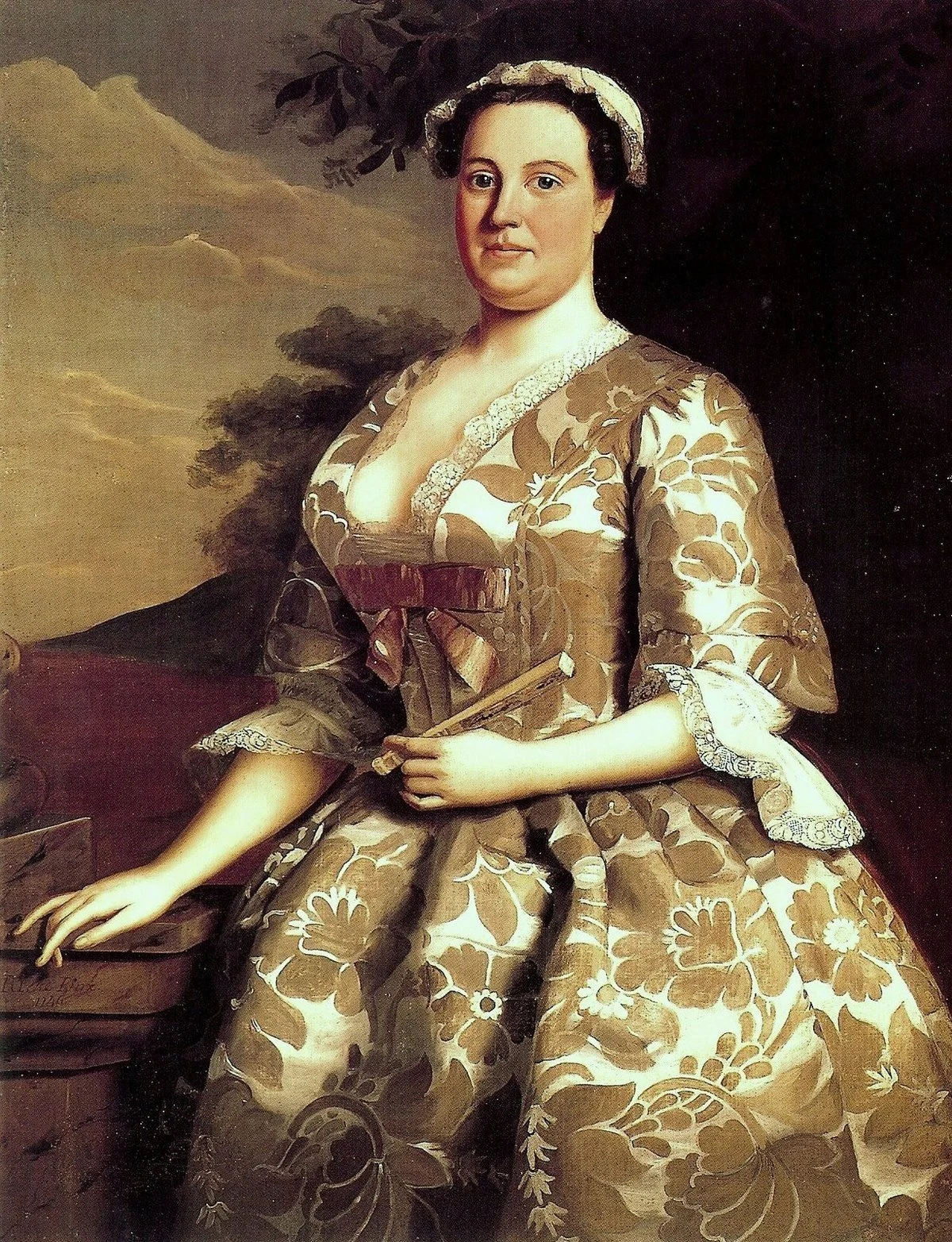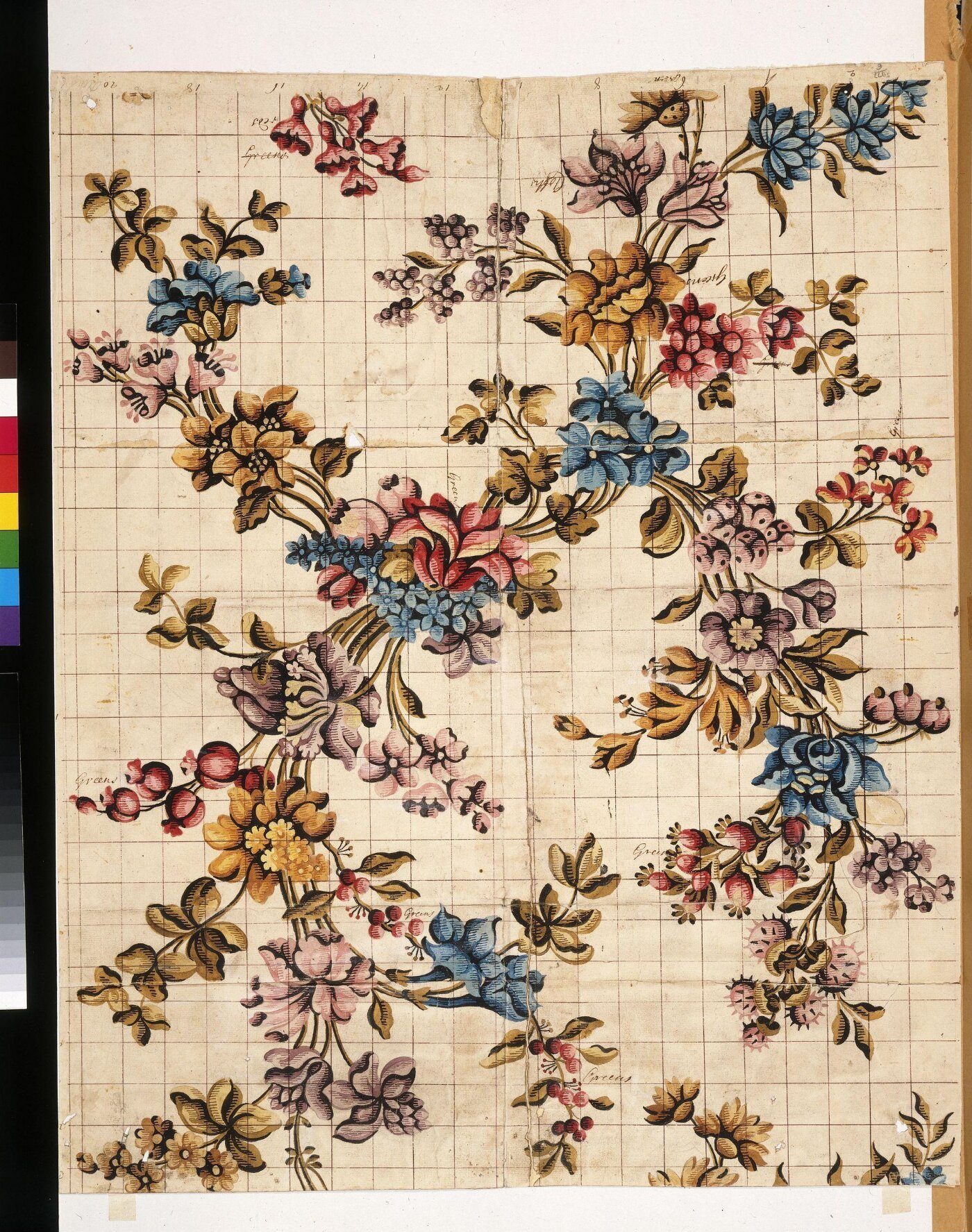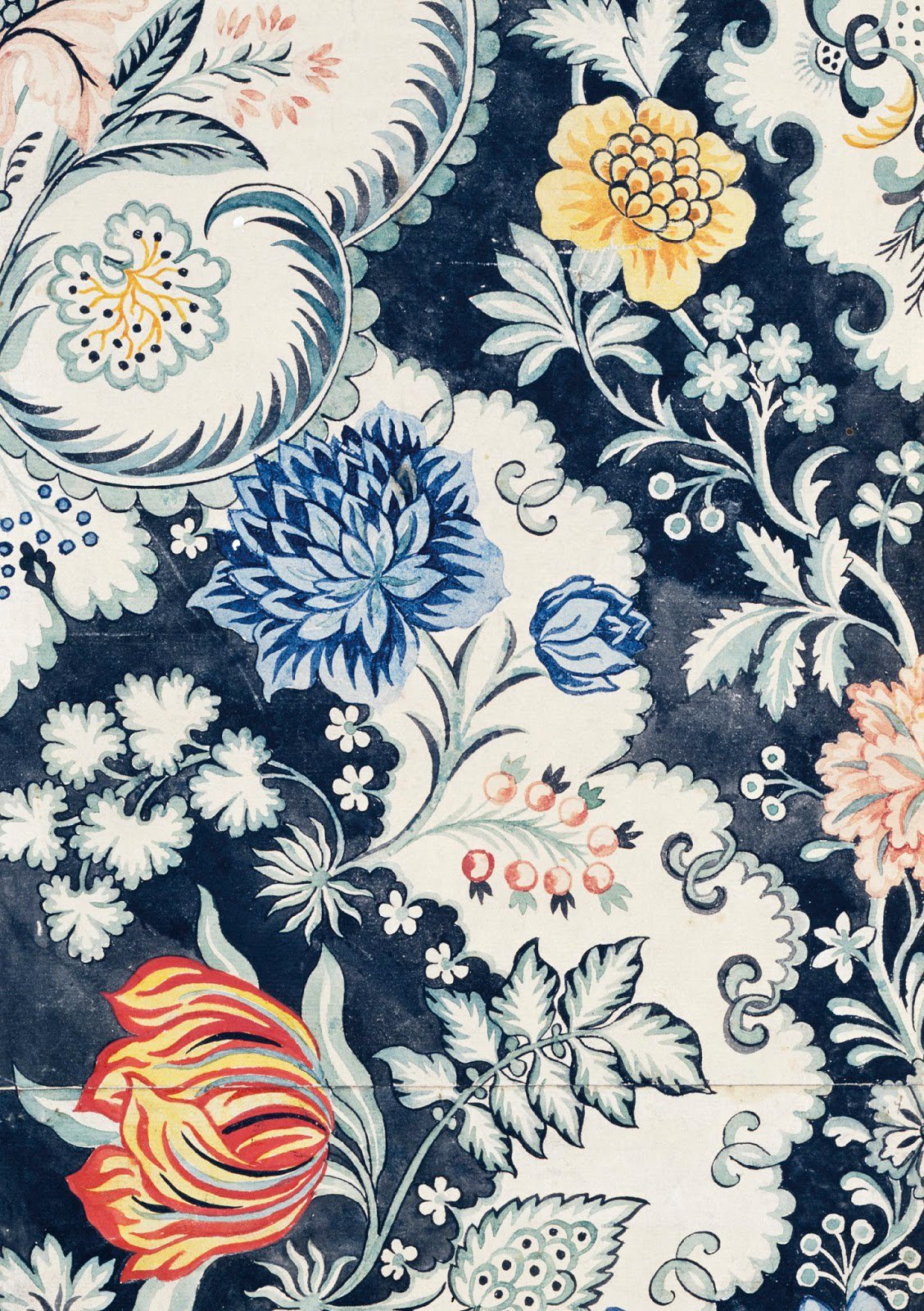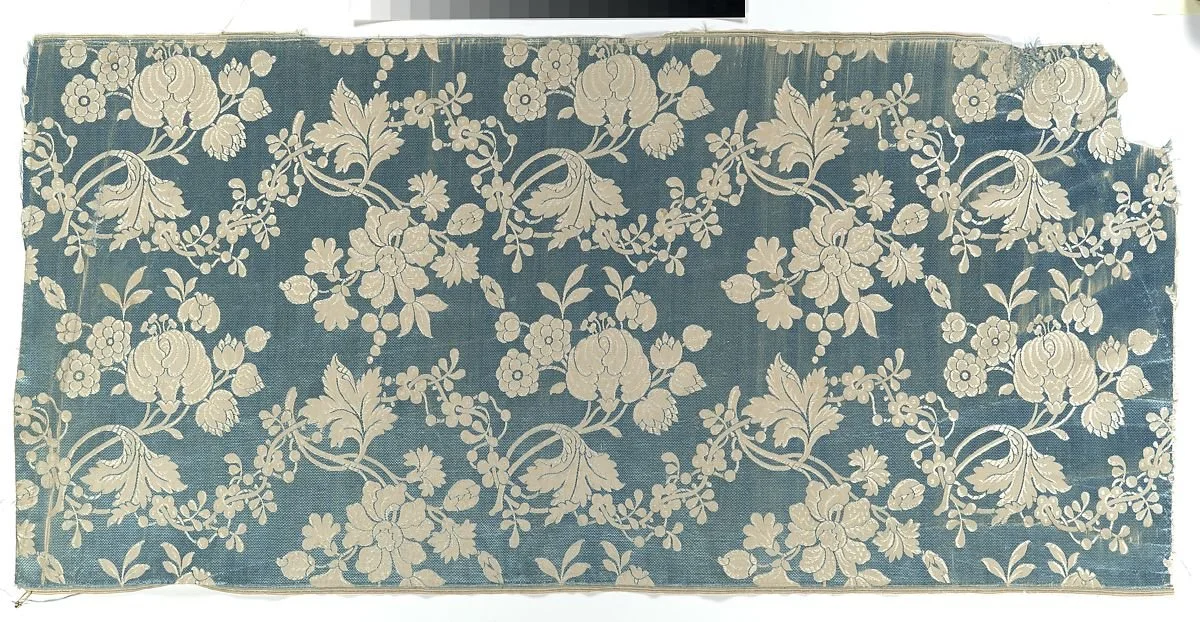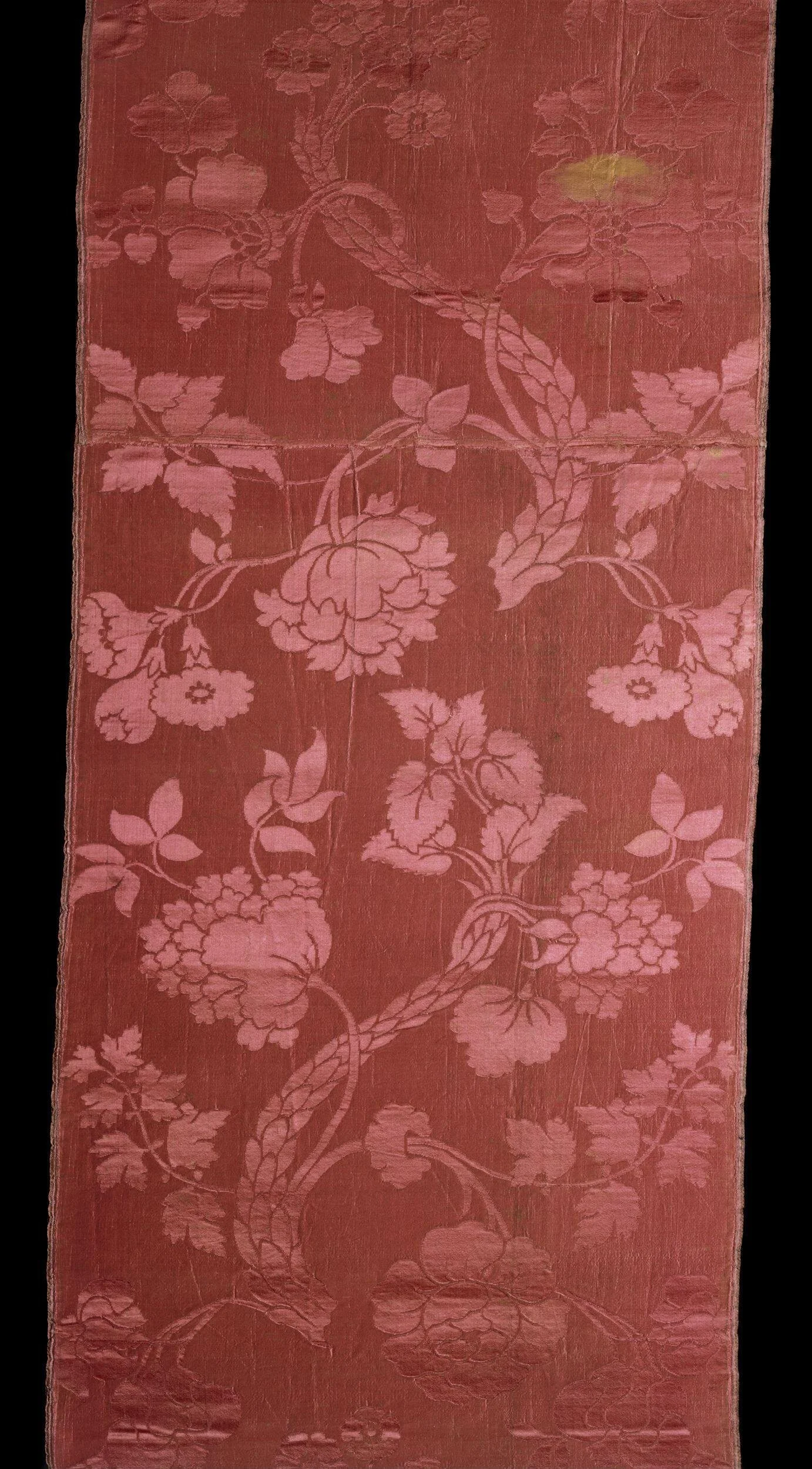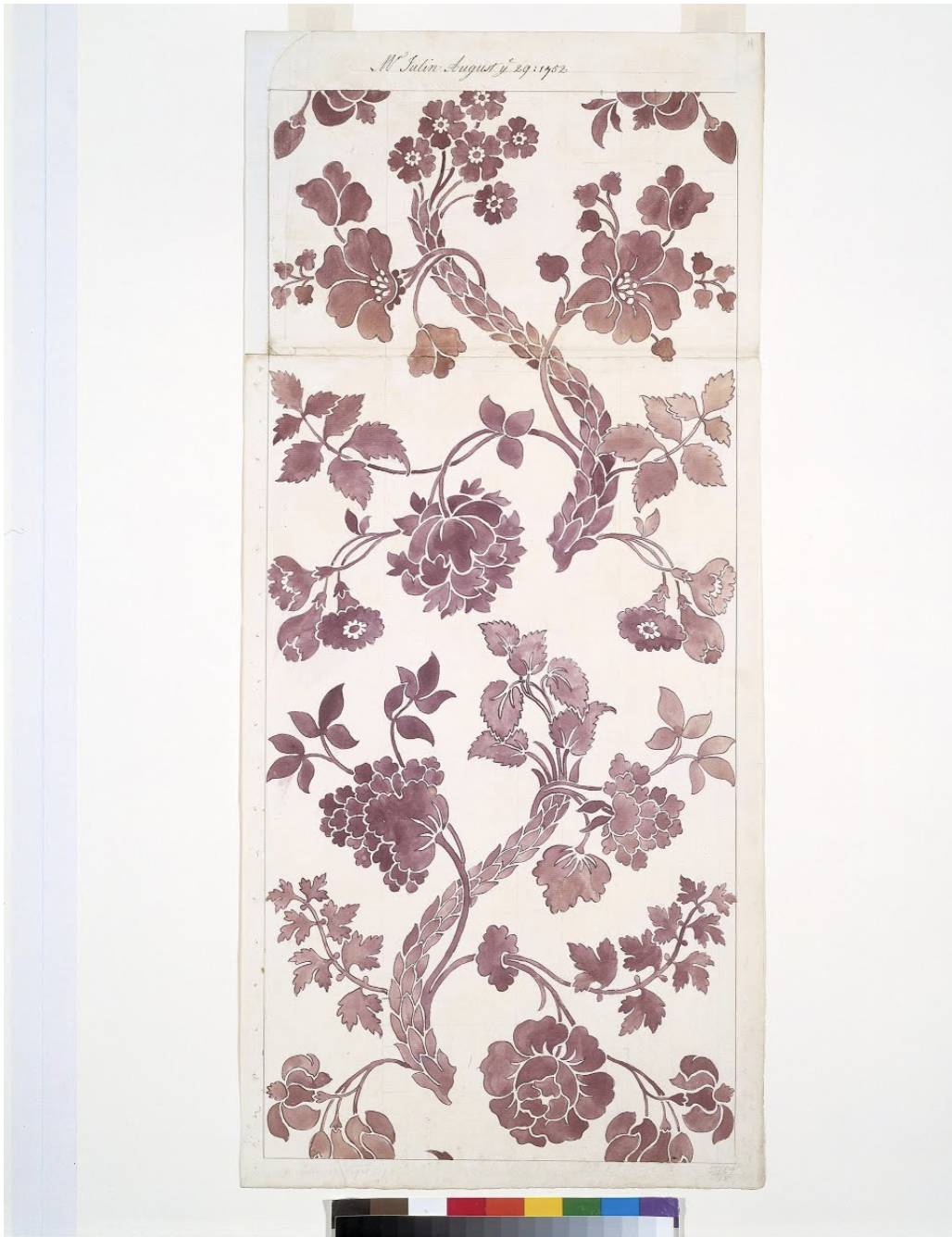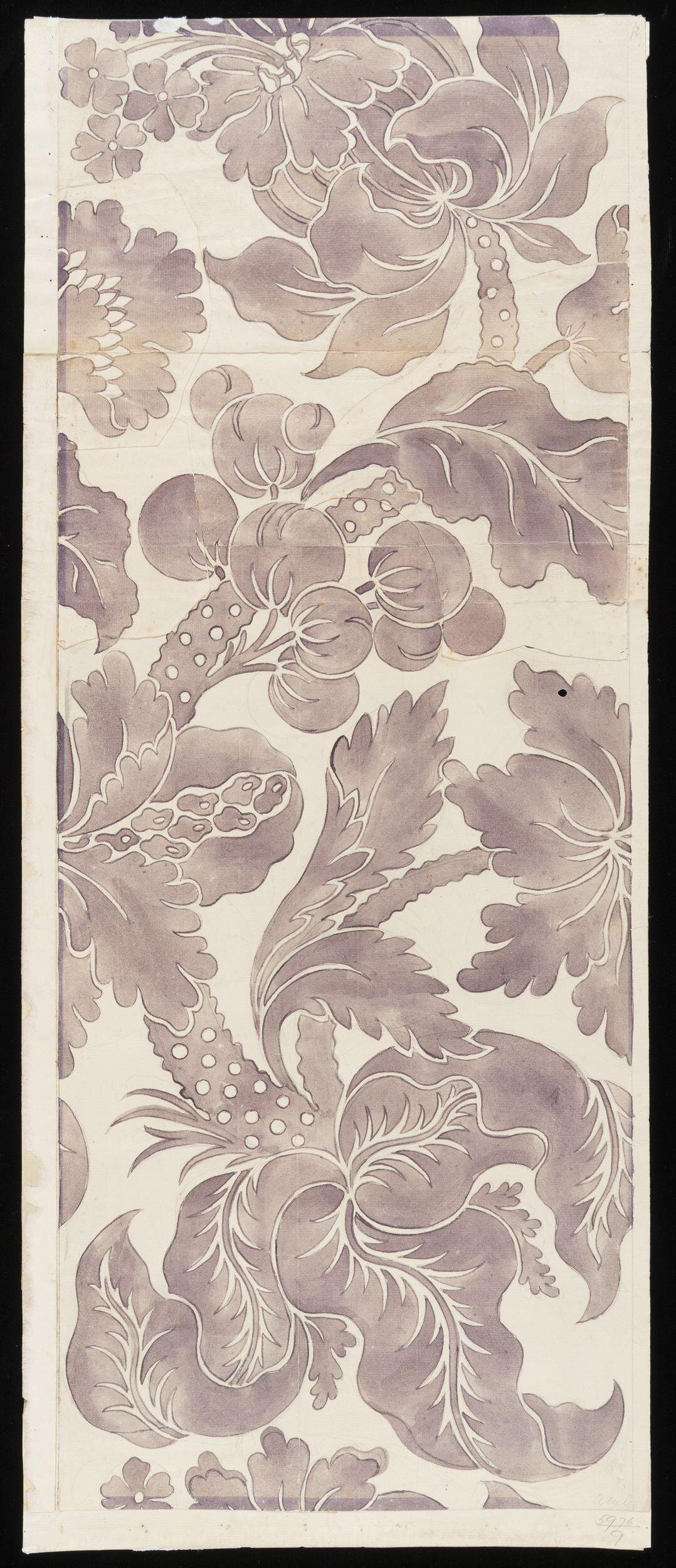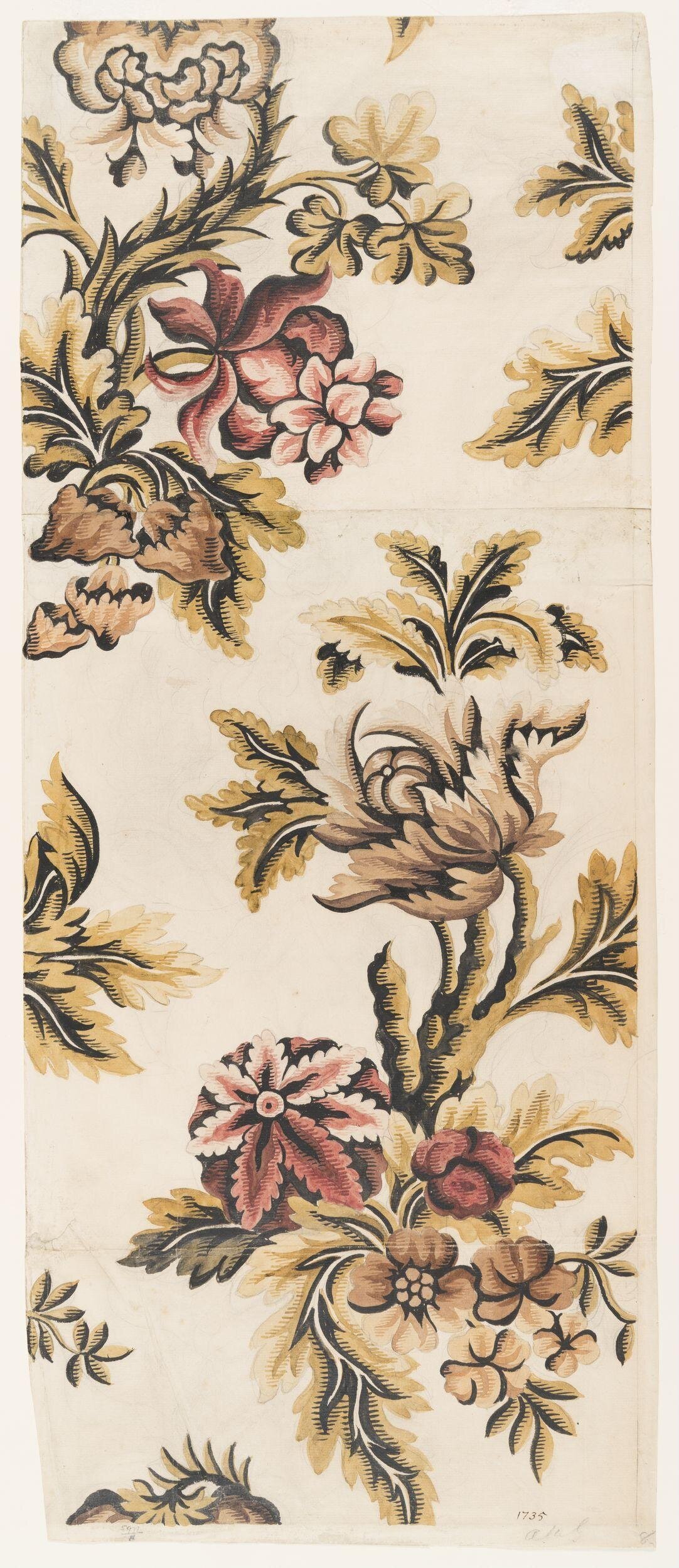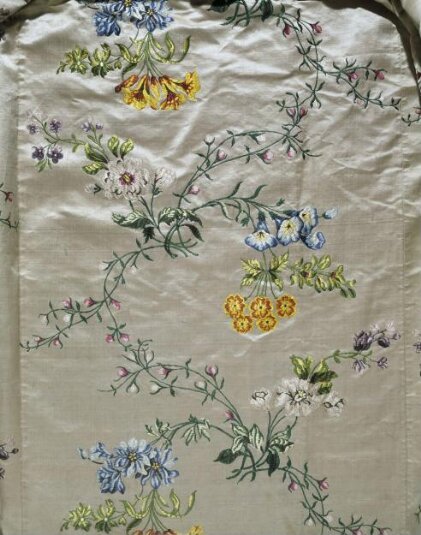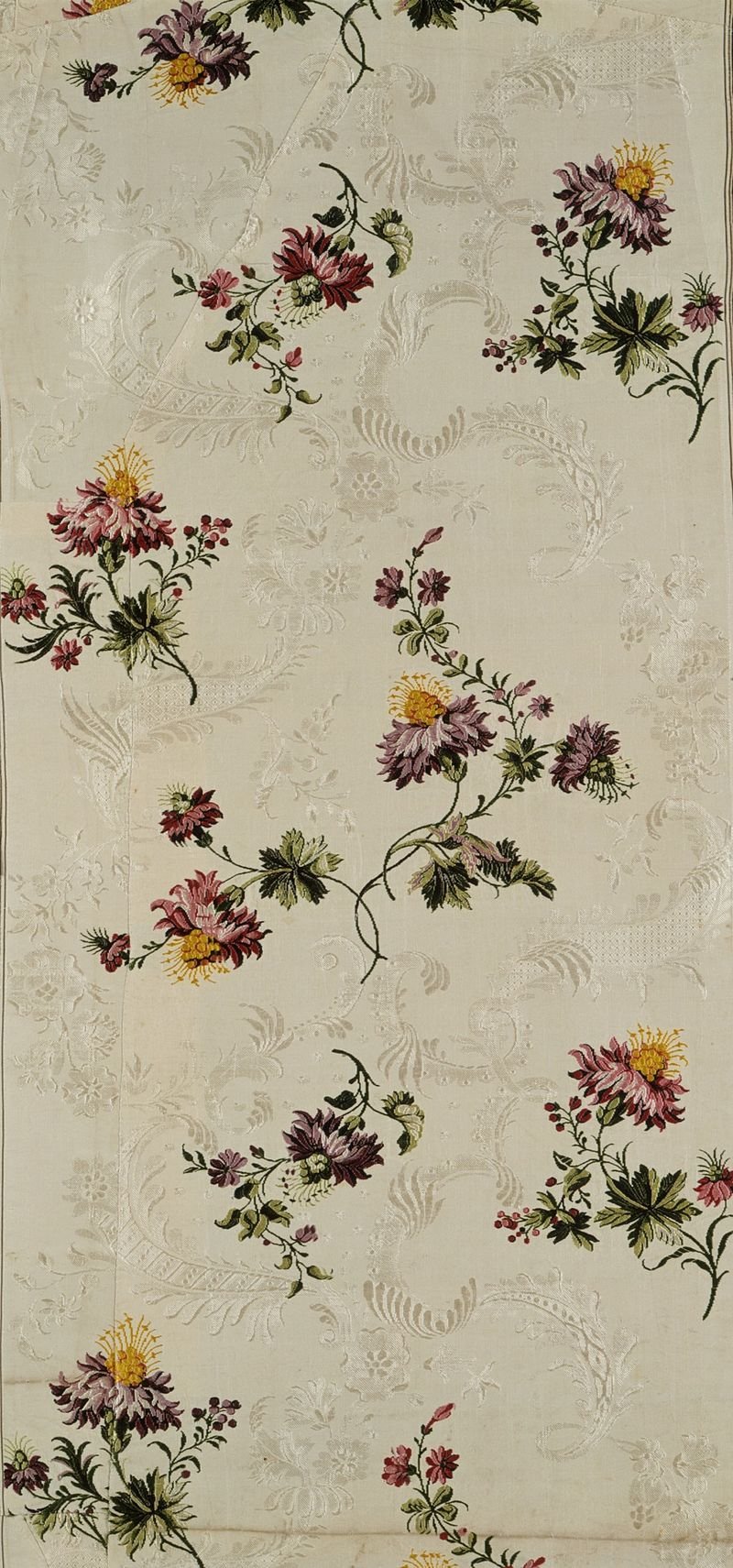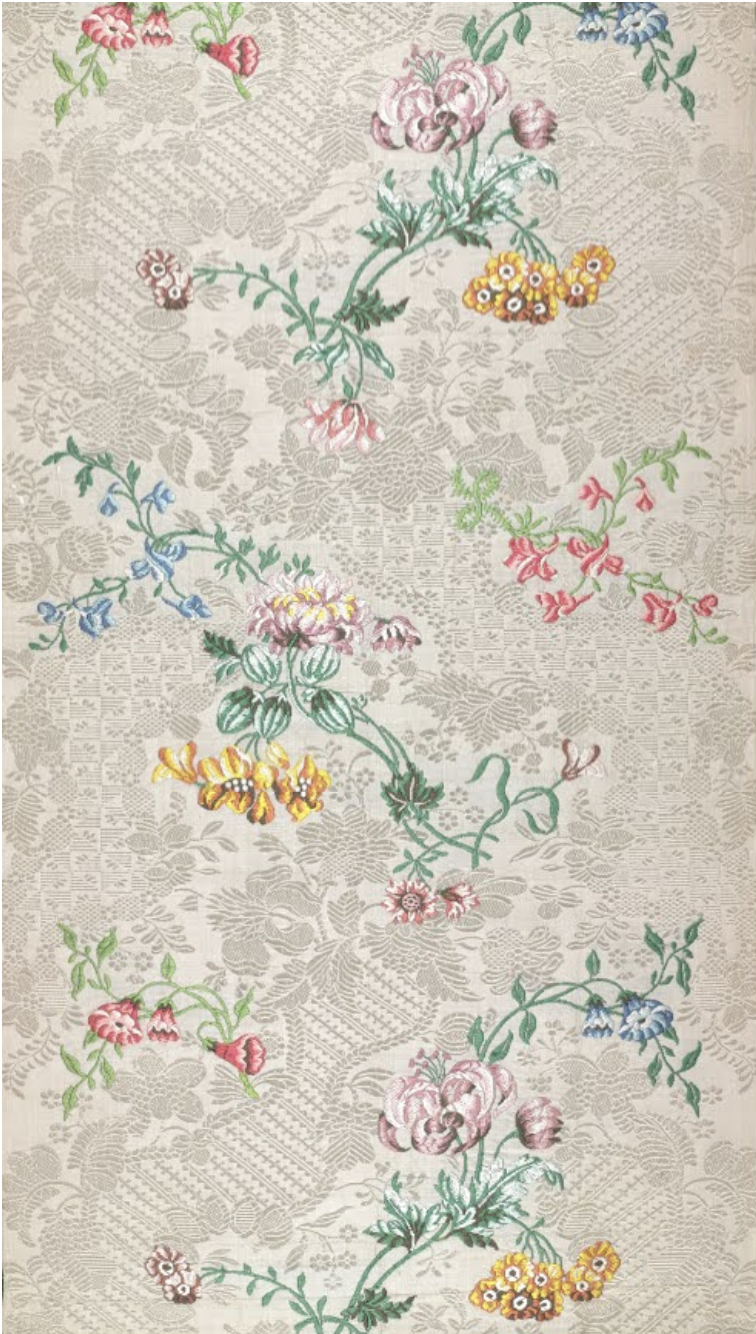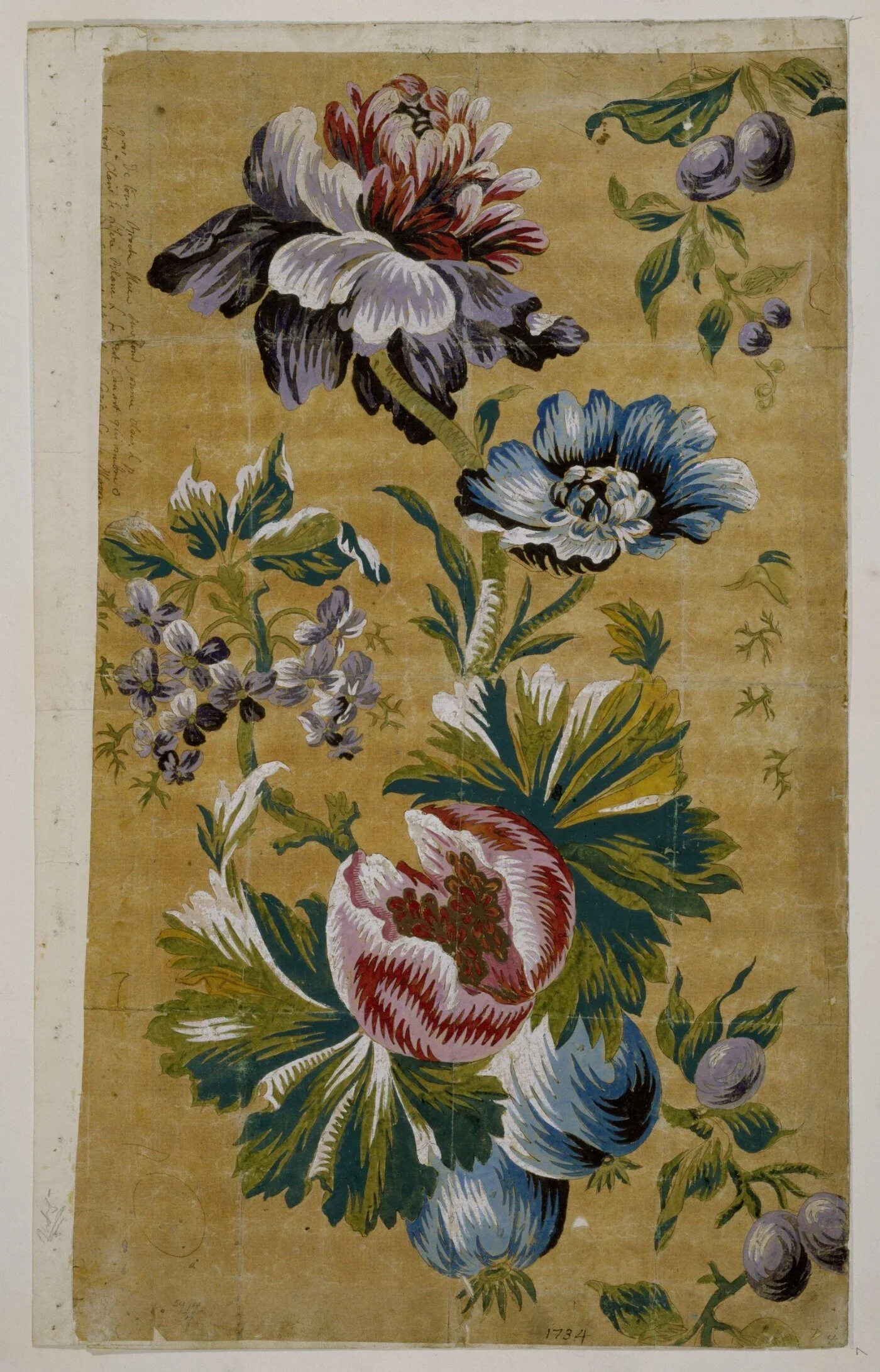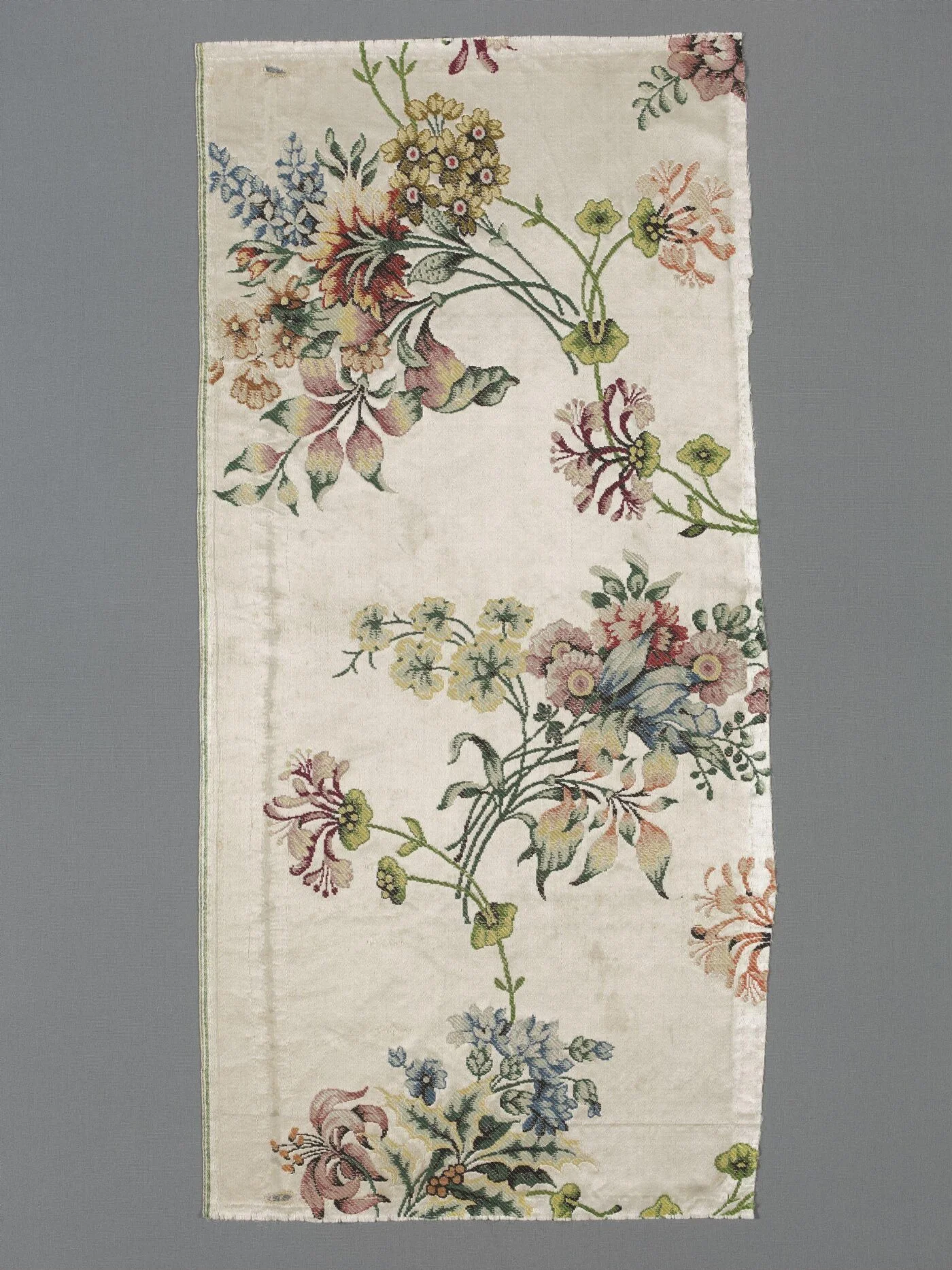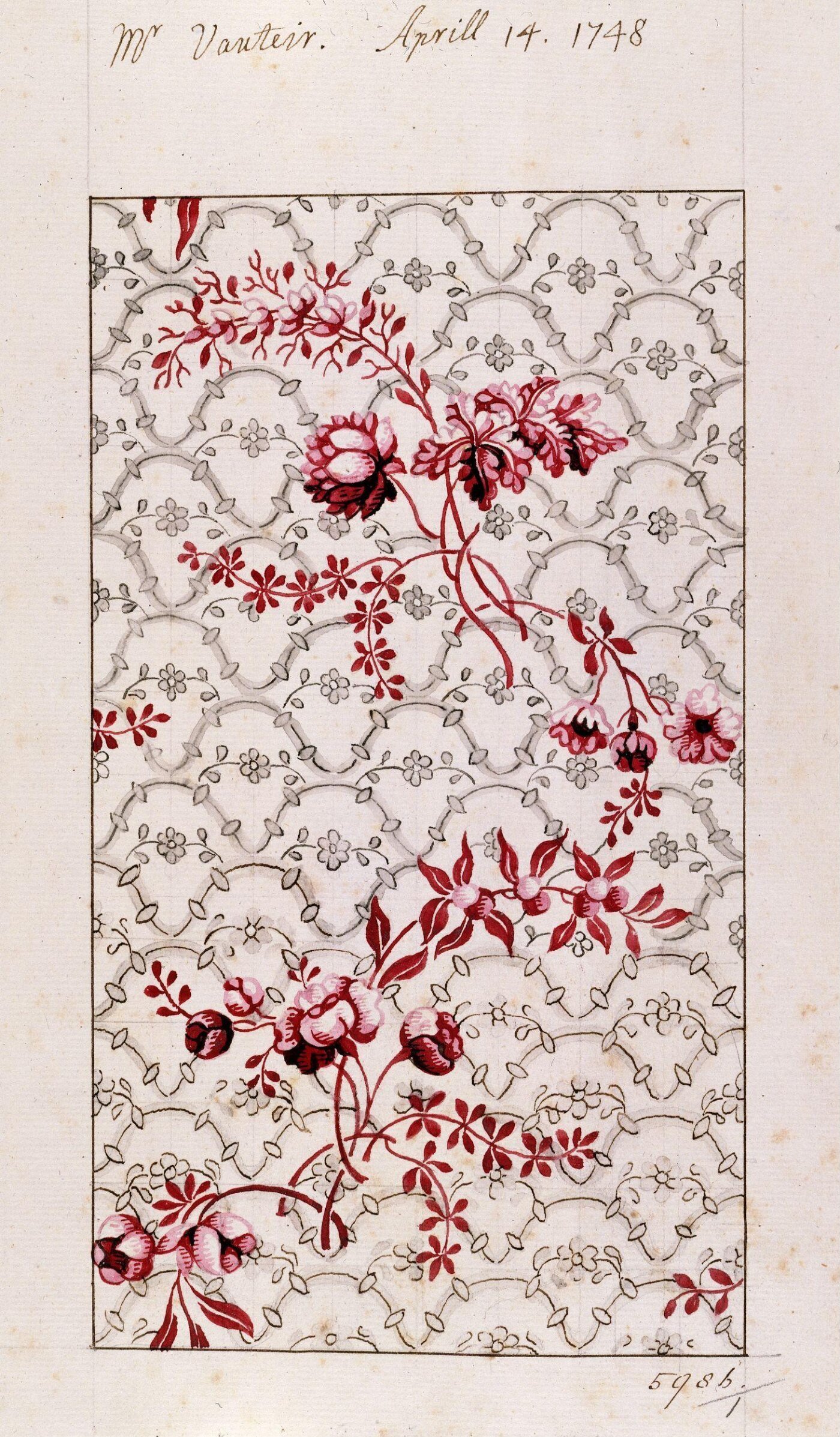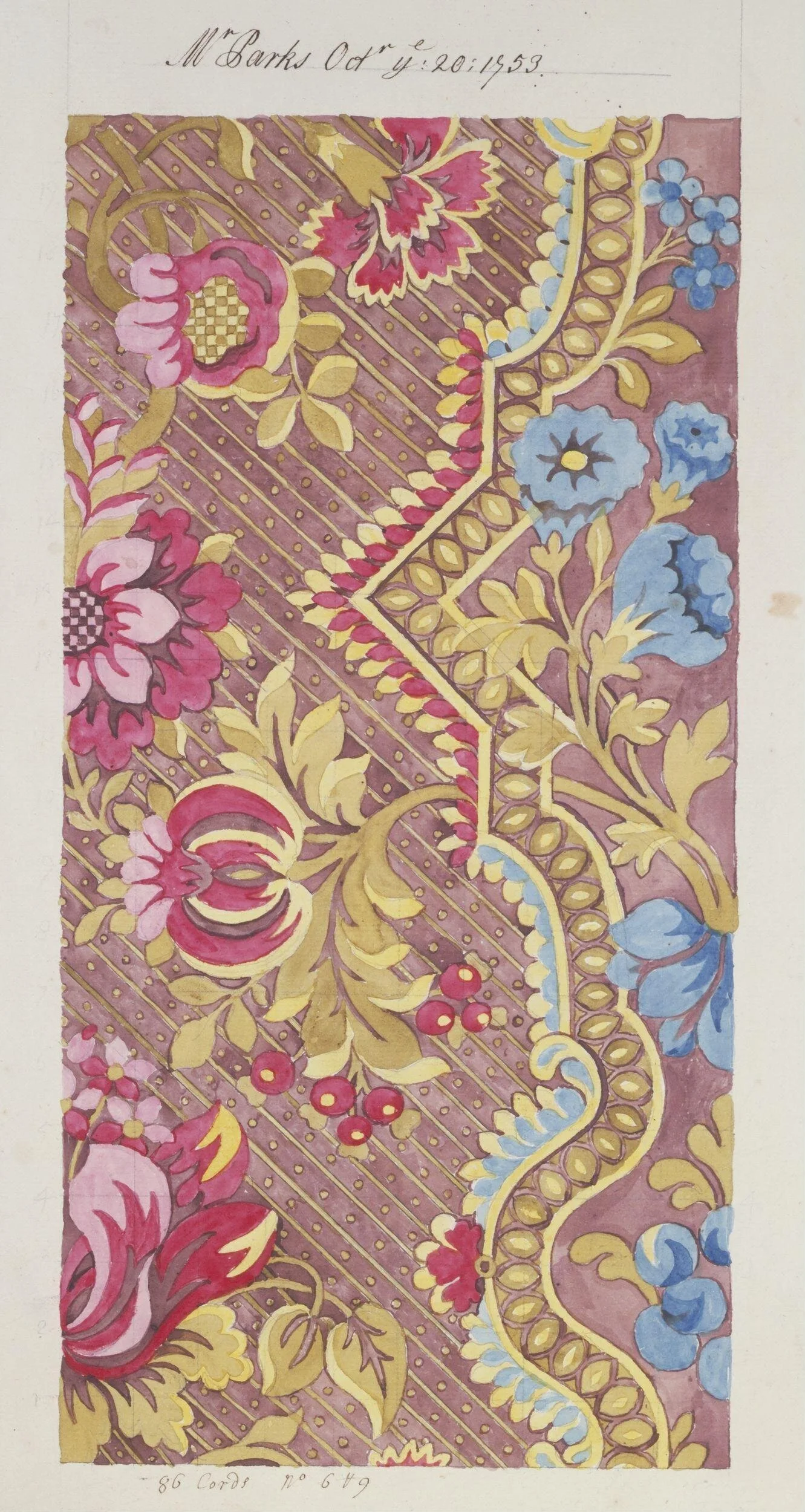Happy birthday to Anna Maria Garthwaite!
The fantastic floral silks of a prolific English pattern designer.
Traditional florals are having a moment right now, with Grandmillenial styles weaving nostalgia into our furnishings and fashion.
The fine silk designs of Anna Maria Garthwaite–when I have been lucky enough to see them in museums like the Victoria & Albert Museum– give me so much pleasure in their balanced, delicate renderings of flora and masterful use of color.
Born on this day in 1688 in Hartston, Leicestershire to a reverend and his wife, Anna Maria Garthwaite became one of the most famous English designers of her time. We don’t know how she learned to design for silk weaving, but her graceful designs show that she thoroughly understood her craft. Her family was acquainted with several naturalists of the time, which may give insight into her skilled rendering.
Between 1728 and 1756 she created over 1000 designs for woven silks. Some 874 of her original designs in watercolor are now in the Victoria and Albert Museum’s @vamuseum collection. Many of her original watercolors have survived, and silks based on these designs have been identified in portraiture and costume collections worldwide.
Garthwaite was known for her vivid floral designs, hand-woven in Spitalfields in the mid 18th century.
Garthwaite moved to the Spitalfields area of London in 17288 with her sister. Spitalfields was the heart of the silk weaving trade in London, and home to many French Huguenot weavers who fled from religious persecution in France in the 1680s. These refugees were skilled weavers and their expertise added to the already established and thriving silk trade in London. Spitalfields silks were known around the world, and widely exported to Northern Europe and Colonial America.
Remarkably, the middle aged and unmarried Garthwaite began to set herself up as a silk designer. There were few female designers in the silk trade, and her designs are the only surviving designs from a woman of that era today. In the male-dominated trade, Garthwaite only ever signed her work with her initials so that buyers would not be deterred by the fact that she was not male.
Garthwaite’s work is associated with French Roccoco style, with asymmetrical structures and strong C-and S-curve design elements. But her work later diverged from French styles, favoring clusters of smaller naturalistic flowers in bright colors scattered across a usually pale ground. French silks at the time were more stylized, with more harmonious (though unrealistic) colorations.

